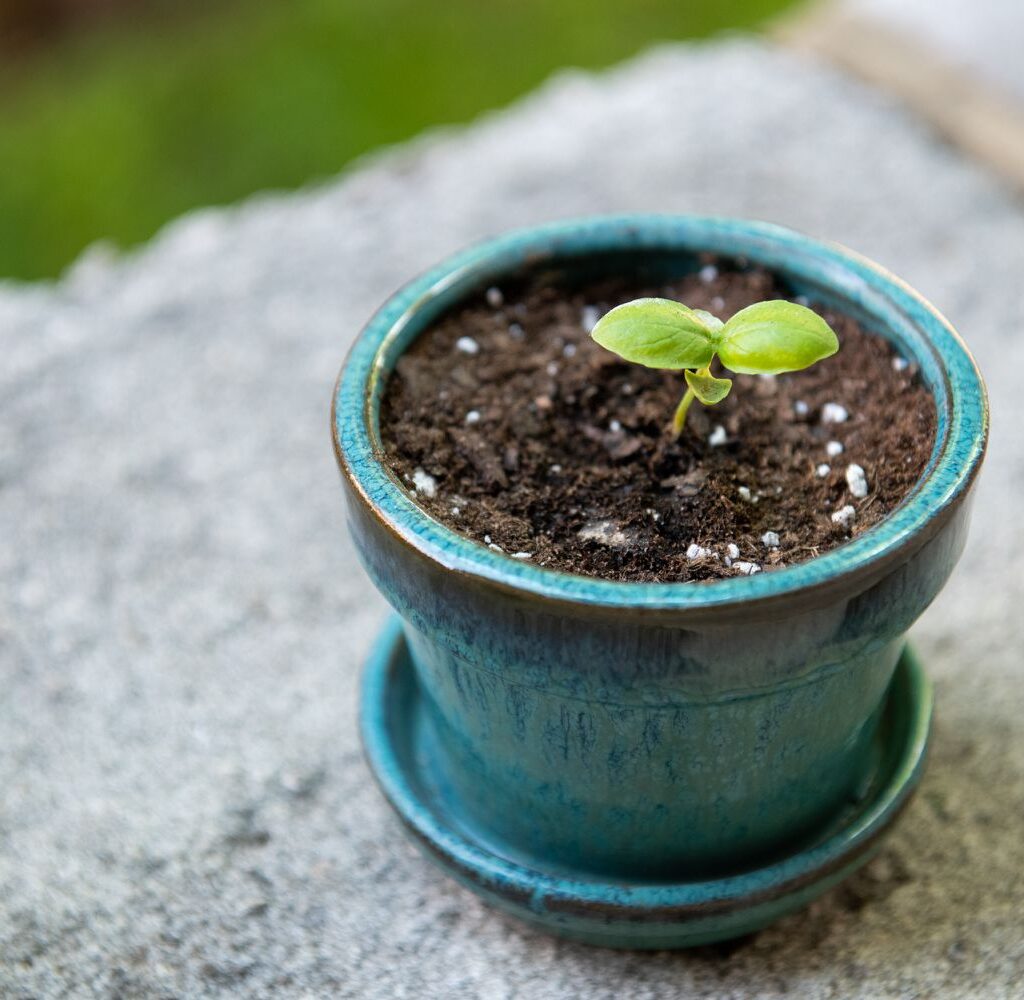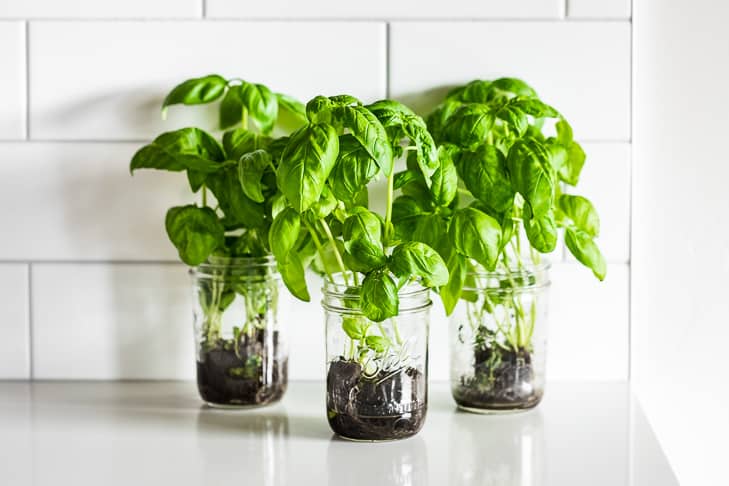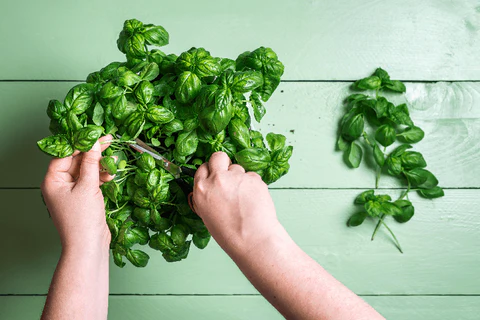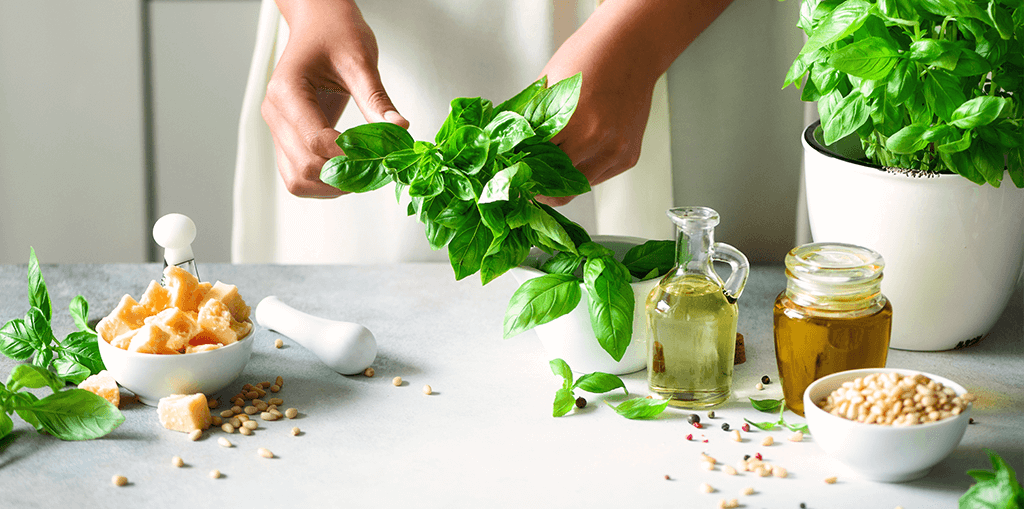There’s nothing quite like the aroma of fresh basil wafting through your kitchen. Whether sprinkled on a Margherita pizza, blended into a fragrant pesto, or steeped in herbal teas, basil is one of the most versatile and beloved culinary herbs around the world. Luckily, it’s also one of the easiest herbs to grow at home!
In this comprehensive guide, we’ll show you how to take care of a basil plant — whether you’re growing it on a sunny windowsill, balcony, or backyard herb garden. From choosing the right variety to watering, pruning, and troubleshooting, you’ll have fresh, flavorful leaves at your fingertips in no time.

Why Grow Basil?
Basil (Ocimum basilicum) isn’t just a kitchen essential — it’s also known for its mood-boosting aroma, natural antibacterial properties, and symbolism of love and prosperity in various cultures. Growing basil at home ensures a steady supply of fresh, chemical-free leaves, perfect for cooking, garnishing, and even home remedies.
Key benefits of growing basil:
- Fresh, flavorful leaves anytime
- Aromatic addition to your home or garden
- Easy to grow indoors and outdoors
- Boosts pollinators like bees when grown outside
- Natural insect repellent properties

Choosing the Right Basil Variety
There’s a basil type for every taste and purpose. Before you start growing, it’s good to know your options:
- Sweet Basil – Classic Italian variety for cooking
- Genovese Basil – Strong flavor, perfect for pesto
- Thai Basil – Spicy, licorice-like flavor for Asian dishes
- Lemon Basil – Citrusy notes ideal for teas and seafood
- Purple Basil – Deep purple leaves with a milder taste, ornamental and culinary
Choose a variety (or a few!) based on your culinary preferences and aesthetic.

Light Requirements
Basil loves the sun. It thrives in 6 to 8 hours of bright, direct sunlight daily. If you’re growing indoors, a south or west-facing window is best. In lower light, you can supplement with a grow light to keep the plant lush and productive.
Signs your basil needs more light:
- Stunted growth
- Pale, yellowing leaves
- Sparse foliage
For outdoor growing, make sure it’s planted in a sunny, sheltered spot, away from strong winds.

How to Water Basil
Basil prefers moist but well-drained soil. Consistency is key — neither too dry nor too soggy.
Watering tips:
- Water when the top inch of soil feels dry.
- Use room-temperature water.
- Water at the base of the plant to avoid wetting the leaves, which can lead to fungal issues.
- In hot weather or indoor environments, you may need to water daily.
Pro Tip: Avoid letting the soil completely dry out, as this stresses the plant and causes leaves to wilt and become bitter.
Soil and Potting
Basil thrives in rich, well-draining soil with a slightly acidic to neutral pH (6.0 to 7.5).
Ideal soil mix:
- All-purpose potting mix
- Add perlite or coarse sand for better drainage
When growing in containers, choose pots with drainage holes to prevent waterlogging. A 6-8 inch pot works well for single plants, while larger containers can accommodate multiple plants.
Fertilizing Your Basil Plant
To keep your basil vibrant and leafy, occasional feeding is helpful.
Fertilizer tips:
- Use a balanced liquid fertilizer (10-10-10) every 2-4 weeks during the growing season.
- Avoid over-fertilizing, as too much nitrogen can make the leaves less flavorful and reduce essential oil content.
- Organic options like compost tea or fish emulsion are gentle and effective.
How to Prune and Harvest Basil
Regular pruning is crucial to keep basil bushy, productive, and prevent early flowering (which can cause leaves to taste bitter).
How to prune:
- Once the plant has at least 6 leaves, pinch off the top pair of leaves just above a leaf node (where new leaves emerge).
- Always cut just above a set of two leaves.
- Remove any flower buds promptly to extend the harvest period.
Harvesting tips:
- Harvest leaves from the top down.
- Use scissors or pinch with fingers.
- Never remove more than one-third of the plant at a time to allow for regrowth.
Regular harvesting encourages a fuller, healthier plant.
How to Repot or Transplant Basil
If your basil outgrows its pot or needs moving to a garden bed:
Steps to repot or transplant:
- Gently loosen the plant from its current pot.
- Check roots for overcrowding or rot.
- Place it in a new, slightly larger container with fresh soil, or transplant outdoors after the last frost.
- Water thoroughly and keep in partial shade for a couple of days to minimize transplant shock.
Common Basil Problems and Solutions
Even though basil is hardy, it can face a few issues:
Yellowing Leaves
- Cause: Overwatering or poor drainage
- Solution: Adjust watering, improve soil aeration
Wilting Leaves
- Cause: Underwatering or root rot
- Solution: Water consistently, check for soggy soil
White Powdery Coating (Powdery Mildew)
- Cause: High humidity and poor air circulation
- Solution: Increase airflow, avoid wetting leaves, remove affected parts
Pests (Aphids, Whiteflies, Spider Mites)
- Solution: Spray with neem oil or soapy water solution
Encouraging Basil to Flourish
For continuous, lush growth:
- Pinch flower buds early to focus energy on leaf production.
- Fertilize lightly and consistently.
- Rotate pots or plants for even light exposure.
- Harvest regularly to encourage new leaf growth.
Pro Tip: Basil loves companions! Grow it near tomatoes, peppers, or oregano to repel pests and boost flavor.
Propagating Basil from Cuttings
An easy and rewarding way to grow more basil is by propagating from cuttings:
How to propagate:
- Cut a 4-6 inch stem just below a leaf node.
- Remove lower leaves.
- Place in a glass of water on a sunny windowsill.
- Roots will develop in 7-10 days.
- Transfer to soil when roots are 1-2 inches long.
Indoor vs. Outdoor Basil Care
Indoor basil:
- Requires more frequent watering due to dry air.
- Needs bright, direct sunlight or a grow light.
- Watch out for pests like spider mites.
Outdoor basil:
- Prefers warm weather (above 50°F / 10°C).
- Needs protection from strong winds and heavy rain.
- Attracts beneficial pollinators like bees.
Final Thoughts
Taking care of a basil plant is simple, satisfying, and incredibly rewarding. With its vibrant leaves, irresistible aroma, and culinary versatility, having basil on hand ensures fresh flavors at your fingertips.
Whether you grow it on a sunny windowsill, balcony, or backyard herb garden, basil thrives with regular sun, moderate water, occasional pruning, and a little TLC. It’s the perfect herb for beginners and seasoned gardeners alike.
So grab a pot, some soil, and a packet of seeds or cuttings — and bring the joy of fresh basil into your kitchen today!





Leave A Comment